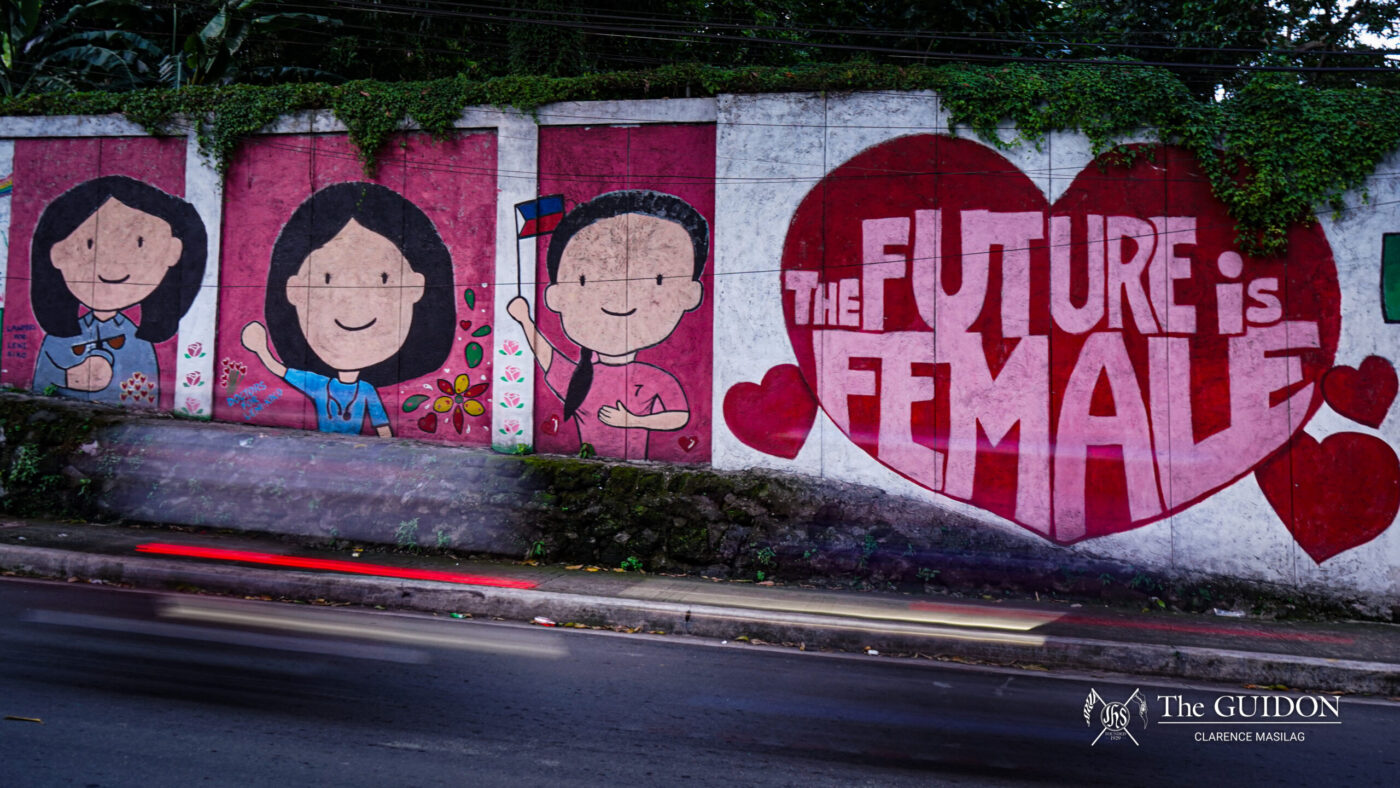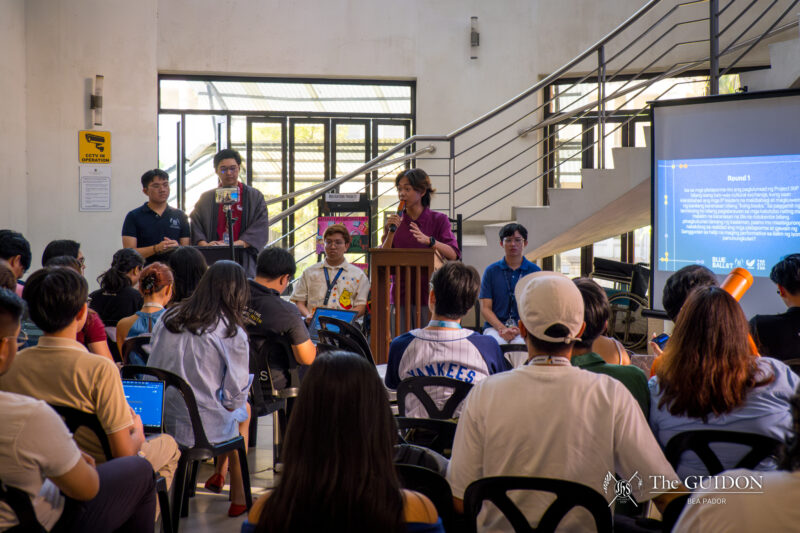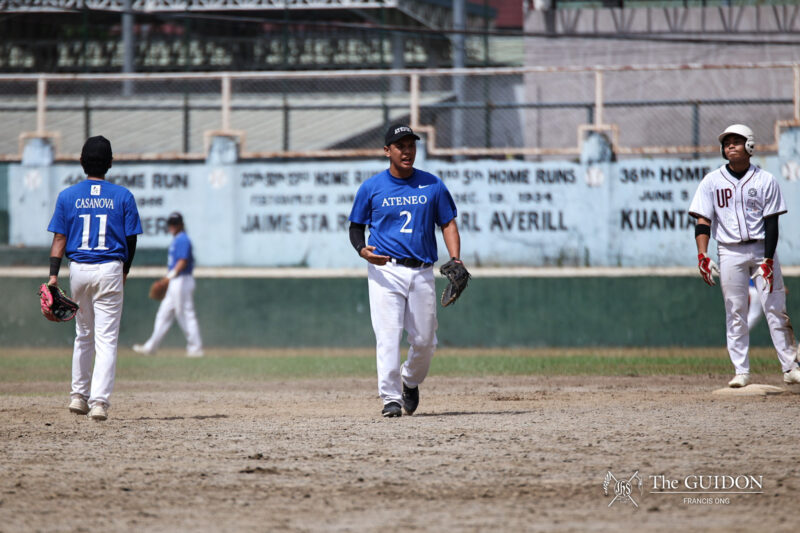For decades, the walls of the Religious of the Good Shepherd convent—much like the nuns that run it—stand strong; its facade, a constant testament to the times.
BEFORE THE clergy wielded rosaries against tanks during the 1986 EDSA revolution, the Religious of the Good Shepherd (RGS) sisters of Katipunan were already standing their ground against the Marcos dictatorship. To this day, the RGS sisters persist in their mission to resist another Marcos administration and advocate for the marginalized, especially women and children.
Among these advocates is Sr. Mary Lourdes Fabia, a nun from the RGS community and a former principal of the congregation’s St. Bridget School in Quezon City. Today, she stands as a witness to the evolution of the walls that stretch along Aurora Boulevard, and to the Good Shepherd mission.
Statements of the times
The story of resistance contained in these walls began during the Martial Law era. In an attempt to “polish” Metro Manila for the eyes of foreigners, the government wanted exterior walls cleaned. This campaign reached the RGS convent in Katipunan, as its facade was visible to passersby along Aurora Boulevard. Sr. Lourdes vividly remembers how a truckload of soldiers arrived at their doorstep, offering to paint the dirtied concrete white.
“Kaming mga madre nag-usap, ‘Ay papayag ba tayo?’ Kasi that is going along with the plan to deceive the people that everything is fine, everything is clean,” she recalls.
(We in the convent talked among ourselves, ‘Will we let them paint our walls?’ Because that would mean going along with the plan to deceive the people that everything is fine, everything is clean.)
When the nuns refused, a general from Camp Crame called to convince them to accept the offer, admitting that he was concerned for their safety should they refuse. Despite these attempts to intimidate and persuade, the nuns remained resolute in their decision. “We’re making a statement. Di wala talaga. Hindi na-whitewash, (It didn’t happen. The walls were not whitewashed,)” Sr. Lourdes recounts.
Decades later, the walls would finally be given a fresh coat for another inspiring statement. During the 2022 National Elections, the congregation allowed a group of alumnae from St. Bridget to paint a mural in support of the Leni-Kiko ticket on the very same walls they refused to whitewash.
“Sometimes we say no for a good reason; we make a statement. This time, we say yes,” Sr. Lourdes affirms.
Sr. Lourdes explains that the statements on their walls reflect the totality of life, which, beyond spirituality, includes everything that concerns the person and the community.
True to the mission
The congregation’s actions are rooted in Vatican II, which states that all the joys, hopes, griefs, and anxieties of the individual are concerns of the Church. Even when uncertainty was rampant during Martial Law, it did not stop them from continuing to reach out to the least, the last, and the lost.
Despite the dangers that led to Sr. Lourdes’ group receiving conditional absolutions, the nuns—along with their fellow clergy—attended rallies during this time. “Involvement like this is part of our Christian life, our consecrated life,” she emphasized.
Although situated in Bicol during the EDSA Revolution, Sr. Lourdes expressed that she felt the same sense of nervousness, fervor, and triumph as she listened to the radio for updates throughout the night.
“Kahit sa gabi, we were following the radio,” Sr. Lourdes recalls. “Yung pag-wish mo na sana nandun tayo, but at the same time, ‘sige, we pray here.’ We connect with them there.”
(Even during the night, we were following the radio. There was a sense of wishing that we were there, but at the same time, we decided, ‘okay, we pray here.’ We connect with them there.)
Beyond the EDSA revolution, the congregation continues its mission by managing schools, missionaries, residences, and infirmaries. The RGS adapts to the times, expanding services to support young boys in addition to the girls they have long cared for.
Meanwhile, the Good Shepherd store in Baguio, a popular destination for numerous pasalubongs (souvenirs), helps fund the education of the Cordillera Youth, allowing hundreds to graduate.
Wherever they may be, the RGS community strives to stay true to their mission through their Women, Justice, Peace, and Integrity of Creation (WJPIC) thrust. While the need for more opportunities to guide young people remains, the service of the Good Shepherd Sisters continues to help fill in the gaps.
Envisioning hope
At present, Sr. Lourdes remains grateful that the spirit of service continues to live within her and the community she is a part of. She continues to ask for good governance and justice, as she regards poverty, beyond lack of material goods, as a lack of opportunity. “Some who should be paying their debts to society are enjoying life, and there are some who are burdened but should not be burdened,” she states.
Sr. Lourdes also mentions the condition of the Philippine education system today, stating that costly tuition fees and lack of proper facilities limit Filipinos from accessing opportunities to develop. Hence, she continues to believe that no one must be left behind.
As Sr. Lourdes sits in the receiving area of her convent residence, recalling their congregation’s history, her stories give an important reminder. Beyond prayer, the love for God is inseparable from love for community—conveyed through the pursuit for justice in both statements and service.
Like a mantra, she echoes the saying of St. John Eudes, that justice and love are like twin sisters. One cannot be entirely executed without the other. Thus, it is vital to constantly take action—to serve and to make a stand.
Administrations may change faces and service may look different as needs shift, but one thing remains clear. Just as the painted walls that stretch along Aurora Boulevard become a testament to resistance, the RGS sisters continue to stand as testaments of time—storytellers and advocates who remain as firm figures of service, mercy, and love.







